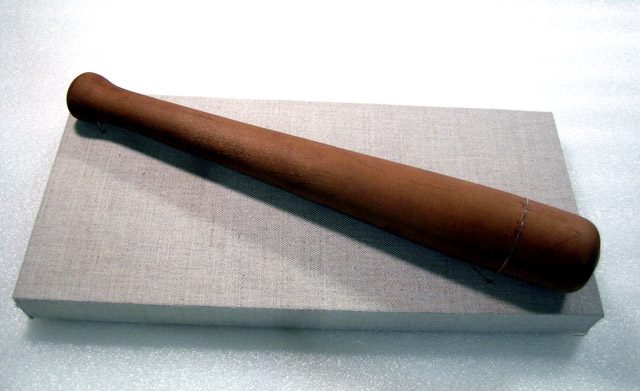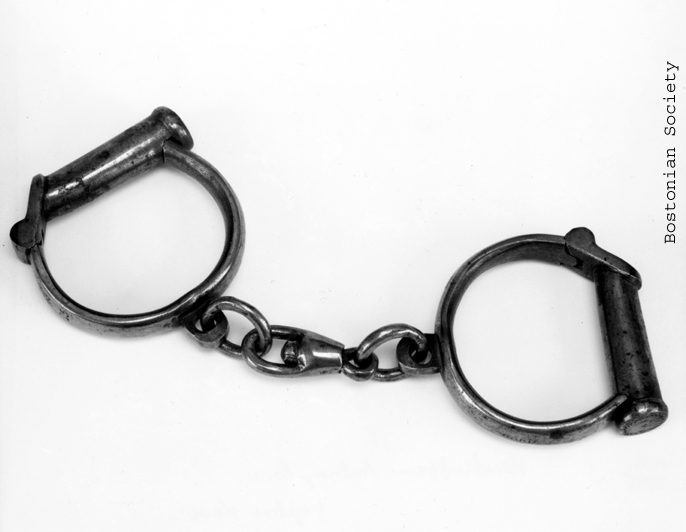
Anthony Burns and the Fugitive Slave Act

Written by Megan Woods, MA in Public History student at Northeastern University
The Legacy of Crispus Attucks – Part IV
This post is part of a series exploring the legacy of Crispus Attucks, the first victim of the Boston Massacre. These posts were written by students in the Master of Public History program at Northeastern University. Crispus Attucks was an enslaved man of African and Native American heritage about whom little is known, but his legacy has been important to successive generations of Americans. For more information about the life and legacy of Crispus Attucks, see First Martyr of Liberty: Crispus Attucks in American Memory by Mitch Kachun (Oxford University Press, 2017).
The Fugitive Slave Act of 1850 was a contested law that gave Southern slaveholders the power to intrude in Northern cities and take alleged fugitive slaves back to captivity. Animated by the hotbed of abolitionism taking hold in the city, Boston activists worked to maintain the freedom of fugitive slaves and even fought violently to maintain black freedom. Under these circumstances, many abolitionists invoked the memory of Crispus Attucks to justify their actions and called upon the need for black freedom.
On May 24, 1854, Anthony Burns was captured in Boston by fugitive slave catcher, Asa Butman, and was scheduled for trial to be returned to enslavement under the law. Reminded of the three fugitive slave cases before the capture of Burns, abolitionists, such as Thomas Wentworth Higginson, Lewis Hayden, and Theodore Parker, were outraged by the injustice and organized a meeting at Faneuil Hall on May 26 to plan the rescue of Burns. On that fateful night, the rescue attempt turned violent.
During the meeting at Faneuil Hall, someone yelled that there was a mob forming at the courthouse to rescue Burns. Some of the attendees of the meeting ran to the courthouse. Others became concerned and went home. The mob stormed the courthouse door where they were met by guards armed with clubs, similar to the nightstick in the collection. During this fateful attack, a courthouse defender was killed. As police began to arrive, the crowd slowly dispersed and some were arrested. After a night of violence, one man was dead, several were arrested, and Burns was still in jail.

On June 2, 1854, after a week-long trial, Anthony Burns was chained with the handcuffs pictured below and escorted down the wharf in Boston surrounded by federal troops and city law enforcement to be shipped back to Alexandria, Virginia. The abolitionists had failed at their attempt to stop the slaveholders. The city of Boston was under martial law, but Boston abolitionists would not forget Burns as they later succeeded to buy his freedom in February 1855.
So how does this relate to Crispus Attucks? On March 12, 1858, William Lloyd Garrison’s The Liberator was commemorating the Boston Massacre and Attucks’s role in American freedom. Prominent abolitionist Thomas Wentworth Higginson was absent from the commemoration, but sent a letter to be published in the newspaper. Higginson’s letter looked to several slave cases in Massachusetts, including the Anthony Burns case of 1854, to argue that the courage Crispus Attucks had was still prominent in the country.

Higginson referenced the attempt to rescue Burns from the courthouse on the violent night of May 26, 1854. He asserted that the first person to enter the courthouse was an African American man and that his white peers were struck with “moral paralysis.” He viewed the white citizens of Massachusetts as scared, and invoked the memory of Crispus Attucks to applaud the courage of the man who fought at the courthouse on that fateful night. Higginson closed his letter with this sentiment: “The modern Crispus Attucks, at the courthouse door. When he stands there again, may there be more of us to follow him.” Almost ninety years after the Boston Massacre and four years after the infamous Anthony Burns case, Higginson called for a world where the courageous would have the support of the cowardly.
The determination of those who acted to rescue Burns in 1854 paralleled the courage of Crispus Attucks in 1770. Both fought for the freedom of their counterparts even though they had no individual rights or support. During this tumultuous time of impending conflict, abolitionists invoked the memory of Crispus Attucks in order to advocate for courageous action in the face of injustice.

